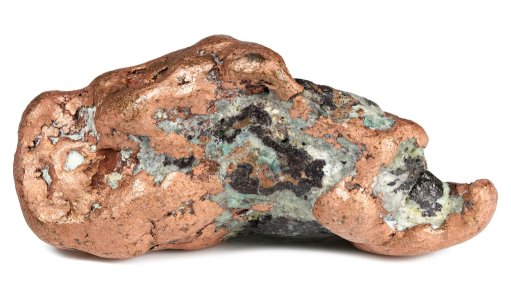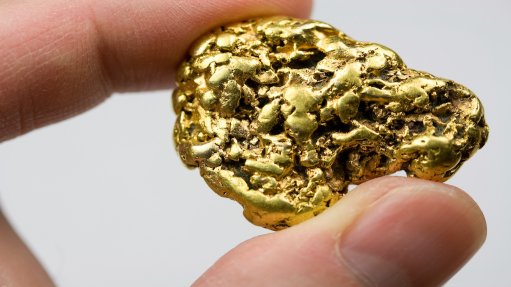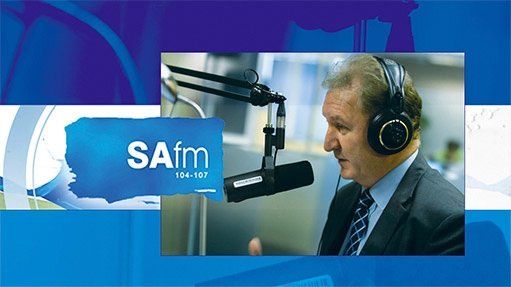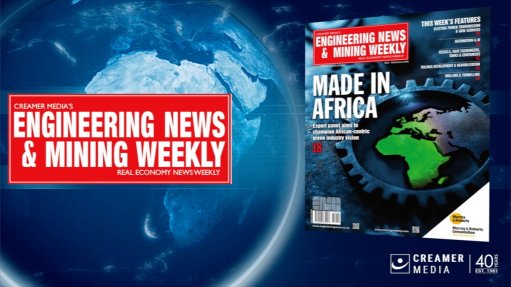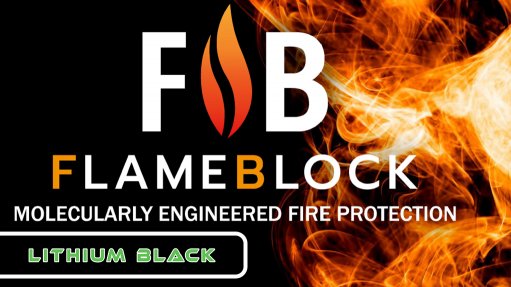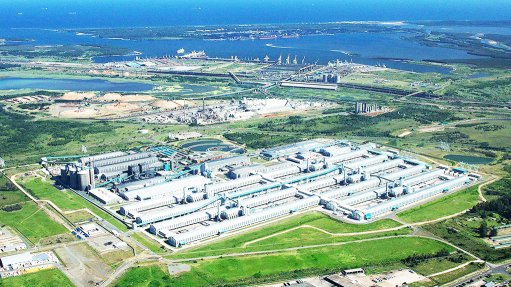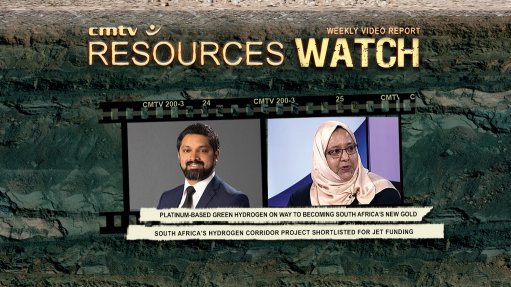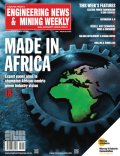Madison to pursue traditional funding avenues after lacklustre uranium tokenisation results
Uranium exploration and development company Madison Metals will pursue more traditional means of raising capital to fund its future efforts, as the company's unique uranium tokenisation strategy has not yielded the expected returns.
“It's been slow, I have to admit, and it definitely hasn't brought the capital that we were anticipating. Madison will have to make a decision on what the tokenisation means. We'll probably focus on more traditional ways of managing the company and raising capital going forward,” Madison CEO Duane Parnham tells Mining Weekly.
Parnham’s comments follow a pair of forays to marry mining investment in the Canadian uranium junior with tokenisation.
In October 2022, Madison helped launch what Parnham believed was the first uranium-backed non-fungible token (NFT). At the time, he said it would open a new market that was previously inaccessible.
He explained at the time that the average retail investor, prior to the tokenisation, was not really able to participate in uranium investment, as the mineral had always been traded as a supply contract between the miner and end-users.
Through the issuing of NFTs, Parnham’s hope was that retail investors would participate in uranium trading, which had historically been an opaque environment owing to it being a hazardous material with various restrictions placed upon its trade.
However, the rollout of that token was not all smooth sailing. In April last year, Madison terminated the NFT partnership with venture capital firm Lux Partners, ascribing the dissolution to challenging market conditions and an unfavourable economic climate, which Parnham said had made it difficult to continue with the partnership.
One of the contributing factors to the decision to end the partnership was developments involving financial services company Stripe, which provides the payment processing platform used by Lux. Stripe froze Lux’s funds and then terminated the account used last year, thereby disrupting key banking and financial operations.
Madison and Lux agreed to refund any NFT purchases that had been made up to that point and the companies decided to part ways.
Despite this setback, Parnham still believed the concept had legs. Therefore, Madison amended its approach towards tokenisation by entering into a uranium forward sales agreement with Bahamas-based Sanmiguel Capital Investment, playing a supply role for a uranium-backed digital asset. For this current offering, Sanmiguel manages the relationship with a third party for provisioning a real world assets (RWA) token, known as “U3O8.”
For the RWA, Madison does not own or produce tokens or other digital assets. The forward sales agreement is undertaken at arm’s length, with Madison responsible for delivering the historically verified in-ground uranium resources in Namibia over a 10-year period.
Nearly a year later, however, Parnham’s bullish outlook on the pioneering tokenisation strategy has somewhat softened.
“I lost maybe a little bit of time in all of this because the uranium market did kind of take off and my competitor’s stocks have all taken off, while I've been turning around at the middle or bottom level.
“However, I don’t think we have lost anything, even though we’ve certainly been a little bit slower in the race. That said, it's the turtle and the hare scenario, where I think this little tortoise is going to catch up,” Parnham says.
Although Madison’s involvement in uranium-backed tokenisation has not panned out as hoped for to this point, Parnham still remains bullish about uranium’s prospects as a key mineral for the global energy transition.
The price of uranium peaked at $106.25/lb on January 29, representing the highest uranium prices since 2007 when it reached $137/lb. However, the price has steadily declined throughout February and settled at $94.05/lb as of March 1.
Parnham is convinced that uranium demand will remain elevated for years to come and, with supply expected to remain constrained during that time, he expects prices to remain elevated as well, hovering at between $100/lb to $150/lb.
“It's evident to me that, when comparing the 2007 cycle and the current cycle, we're seeing much stronger and much [more] supportive underlying fundamentals today than we saw back then that would support this pricing range, which might build a solid foundation for even higher prices going forward,” Parnham says.
He points out that, currently, there are 440 nuclear reactors in operation globally, with another 60 currently under construction. In addition, 26 new reactors are expected to come online within the next three years.
These plants will need significant quantities of uranium upon their start-up so as to build initial inventories and fuel loads. For context, a 1 GW reactor consumes between 500 000 lb/y and one-million pounds a year of uranium oxide (U3O8).
Market indicators point to this growth trend continuing for the next few decades. At COP28, which was held in Dubai, in the United Arab Emirates, in December last year, as many as 24 countries backed a plan to triple their nuclear energy capacity by 2050.
As a result, there is an expectation of greater long-term demand for uranium as a key ingredient in the nuclear fuel chain. Moreover, government financing support is contributing to the growing interest in smaller next-generation advanced and small modular reactors. These smaller plants are gaining traction in the market owing to the reduced upfront capital cost requirements, as well as the significantly reduced construction times and superior scalability.
However, uranium supply is not keeping pace with demand, with some of the world’s top uranium producers downgrading their 2024/25 production forecasts. This is partly owing to sulphuric acid shortages, as well as geopolitical instability impacting on uranium production.
Moreover, key uranium mines are reaching their end-of-life faster than new mines can be opened, owing to long permitting and development lead times.
“There hasn’t been enough done since the 2007 cycle to add new uranium supply that can replace the mines that are now starting to diminish. As such, I think there's going to be a massive supply imbalance going forward after about 2027. So the fundamentals look very strong today and very supportive of strong uranium pricing going forward,” Parnham says.
He believes Madison’s prospects in Namibia will set the company up as a key uranium supplier.
Mining Weekly reported on March 5 that Madison’s latest assay results from the recent surface trench sampling programme at its Khan project in Namibia returned an average grade of 2.78% U3O8 over 4 m at Trench 6.
This followed the first ten assay results from the project that were released on February 7, when the company announced that it had discovered high-grade uranium mineralisation at Anomaly 5 within Khan, which is located at Madison West in Namibia’s Erongo uranium province.
These findings, which include a surface sample of 8.47% U3O8, signal an expansion of new uranium mineralisation, extending Madison’s footprint and project pipeline.
“We have only scratched the surface but we're extremely positive about what we're seeing so far. We're excited about focusing our efforts on the Khan discovery and doing some more work there to prove this,” Parnham says, indicating that the strength of the discovery gives him confidence that a new uranium mine could successfully be established at Khan.
“One of the other advantages of this deposit is that it's in the mountains and we think perhaps maybe that's one of the reasons why it wasn't discovered in the past. We're finding uranium at surface elevated from the base, so tripping ratios would be a lot less,” he says.
Although there is more proving to be done through drilling, Parnham believes that, if all goes well, a new uranium mine could be up and running within 18 months at a capital cost of about $50-million.
Comments
Press Office
Announcements
What's On
Subscribe to improve your user experience...
Option 1 (equivalent of R125 a month):
Receive a weekly copy of Creamer Media's Engineering News & Mining Weekly magazine
(print copy for those in South Africa and e-magazine for those outside of South Africa)
Receive daily email newsletters
Access to full search results
Access archive of magazine back copies
Access to Projects in Progress
Access to ONE Research Report of your choice in PDF format
Option 2 (equivalent of R375 a month):
All benefits from Option 1
PLUS
Access to Creamer Media's Research Channel Africa for ALL Research Reports, in PDF format, on various industrial and mining sectors
including Electricity; Water; Energy Transition; Hydrogen; Roads, Rail and Ports; Coal; Gold; Platinum; Battery Metals; etc.
Already a subscriber?
Forgotten your password?
Receive weekly copy of Creamer Media's Engineering News & Mining Weekly magazine (print copy for those in South Africa and e-magazine for those outside of South Africa)
➕
Recieve daily email newsletters
➕
Access to full search results
➕
Access archive of magazine back copies
➕
Access to Projects in Progress
➕
Access to ONE Research Report of your choice in PDF format
RESEARCH CHANNEL AFRICA
R4500 (equivalent of R375 a month)
SUBSCRIBEAll benefits from Option 1
➕
Access to Creamer Media's Research Channel Africa for ALL Research Reports on various industrial and mining sectors, in PDF format, including on:
Electricity
➕
Water
➕
Energy Transition
➕
Hydrogen
➕
Roads, Rail and Ports
➕
Coal
➕
Gold
➕
Platinum
➕
Battery Metals
➕
etc.
Receive all benefits from Option 1 or Option 2 delivered to numerous people at your company
➕
Multiple User names and Passwords for simultaneous log-ins
➕
Intranet integration access to all in your organisation








